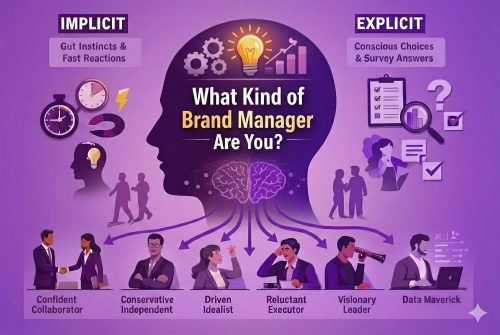
Inside the Mind of a Brand Manager: Find out how your instincts shape the way you work
If you’re a brand manager, you may plan carefully, but a lot of how you work day to day probably comes down to habit and
Measure changes to your product’s packaging

We can test any form of packaging visual and the research can focus on front or back of pack, the imagery, iconography, messaging, and so on.
We can measure a one-off pack or multiple packs – a set of new designs and or new design compared to previous or competitor packs.
We apply emotional and functional impact of the pack on the brand and purchase intent.
We also assess the findability of a new pack and the attention grab of a new pack, and whether they do this better than previous packs or competitor packs.
We compare of each pack in terms of its effect on the brand and the ITP.
We also compute comparison of each pack in terms of the attentional responses to the pack.
The visual artwork and messaging on a pack can grab attention and influence the decision to purchase (see the work of Wyrwa and Barska, 2017; and Hamlin, 2016). The demands on pack design are huge. Packaging has to satisy issues related to materials, protection of the content, and much more. This is considered even before the design of the pack visuals have been created. It’s important to find out what was wrong with the original pack and what competitors do well and badly. Changes to the pack could make it potentially invisible to regular customers in-store. Changes to the packaging need communicate the brand messaging, and we can test this.


At times, products that have undergone a redesign can sometimes become suddenly difficult for your customers to find. This is because customers may have formed a mental model of what the product looks like. So, significant changes in packaging may disrupt this model, potentially making it harder to find on the shelf.
Examples of brands we have carried out packaging tests for: Opill, Kotex, Johnson & Johnson Acuvue contact lenses, Coca-Cola, Loaker biscuits, Nescau, Mederma, Huggies, Danone, Budweiser, AQUA, Organix, Dutch Lady, Heinz, and more…
Consumer psychologists have established that there are two distinct types of attention that customers use. The first is the “push” of attention, which occurs when a customer is intentionally searching for a particular product. This type of attention is characterised by a high level of focus and intentionality. It occurs when the customer is actively seeking out the product they want.
Split Second’s IMPRINT platform measures whether a pack can be easily found on the shelf (or an ecommerce platform). To see how the IMPRINT test works click here.

The second type of attention is the “pull” of attention. This happens when a customer is searching for a product but is drawn to a different product instead. This type of attention is often driven by factors related to the brand’s packaging. We assess whether assets in the pack can capture the customer’s attention and divert them from their original search.
Split Second’s IMPACT platform measures a package’s ability to grab attention. It is an online test that provides a better alternative to eye-tracking technology. It uses reaction time to measure speed of search of a neutral target, instead of a webcam, to measure eye movements. This makes it less invasive for respondents. It is also more accurate and has been demonstrated to be superior to eye-tracking when compared directly (Fulcher, Mathews, & Hammerl, 2008).
Attention pull can be beneficial for the customer as it can lead to the discovery of new products. It is also beneficial to the seller, as it can increase sales. It can also be a challenge for sellers who want to ensure that their customers can still find them. By understanding these two types of attention, sellers can develop strategies to optimise their product listings.
As shown in our bottled water case study, Split Second’s pack testing technology uses implicit testing to compare different pack designs. It is used to determine which one will be more successful and why. By assessing the visual assets, such as colour, font, images, claims, and logo, we can identify which elements of the packaging are doing the hard work. It assesses which assets attract attention and communicating the product’s benefits and features. This information can be used to optimise the packaging design, ultimately driving sales. Our technology provides a data-driven approach to packaging design, giving brands the right insights to create the best packaging.
Check out our latest packaging posts: 8 Examples of Iconic Packaging Design
References
Fulcher, E.P., Mathews, A., and Hammerl, M. (2008).Repid acquisition of emotional information and attentional bias in anxious children. Journal of Behaviour Therapy and Experimental Psychiatry, 39(3), 321-339. https://psycnet.apa.org/doi/10.1016/j.jbtep.2007.08.003
Hamlin, R.P., 2016. The consumer testing of food package graphic design. British Food Journal, 118(2), pp. 379–395. https://doi.org/10.1108/BFJ-03-2015-0105.
Wyrwa, J. and Barska, A. (2017). Packaging as a source of information about food products. Procedia Engineering, 182, pp. 770–779. http://dx.doi.org/10.1016/j.proeng.2017.03.199
Updated July 2024 by Dr Eamon Fulcher, PhD
Applications
Use our technology, founded in consumer neuroscience, to understand the effectiveness of packaging.
New pack designs
Empirical and sensory experience
Comparing packaging with that of competitor products
Front of pack compared with back of pack designs
Complete an enquiry form to arrange a meeting with us:

If you’re a brand manager, you may plan carefully, but a lot of how you work day to day probably comes down to habit and

Well yes, as a matter of fact, everyone is There’s no shame in it. We’re all biased in some way or another, although understandably we’d

The idea of synthetic respondents in market research arises from a desire to simulate human responses using artificial intelligence. Instead of collecting data from real